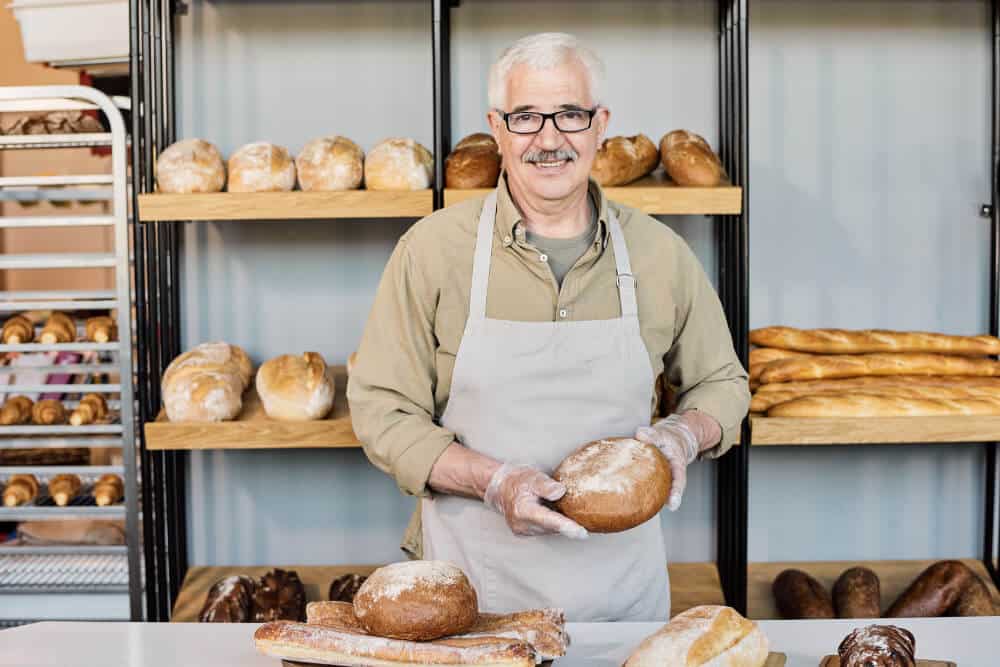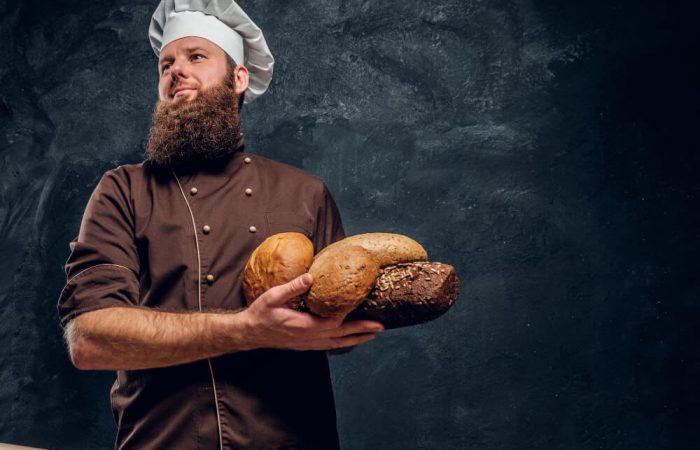Are you a baker who creates beautiful pastries, cakes, and other delicious treats that people can’t seem to get enough of? Selling your baked goods can be a great way to make money doing something you love.
However, if you aren’t sure how to go about your baked goods, it might feel like an intimidating task – especially when you take into account the cost of ingredients and overhead costs.
Good news for you, with the right approach and strategies in mind, deciding the best price for your baking products doesn’t have to be difficult.
In this blog, we will discuss practical strategies that can help you price your baked goods correctly so that they are profitable while providing customers with the value they appreciate.
Table Of Content
Understanding Your Costs
How to calculate the total cost of each baked good?
Factor Pricing for Bakeries
Calculate your profit margin
Importance of regularly reviewing and adjusting pricing strategies
Understanding Your Costs
When it comes to pricing your baked goods, it’s very important to understand all of the primary costs you have to deal with. There are mainly two types of costs associated with pricing your baked goods, including – Fixed Costs and Variable Costs.
1. Fixed Costs
When it comes to deciding the cost of your baked goods, it’s important to start by understanding what your fixed costs are.
Fixed costs such as rent, insurance, utilities, and equipment, will always remain almost the same regardless of the number of baked goods you sell.
By calculating these fixed costs and factoring them into your pricing strategy, you can determine the minimum price you need to charge just to cover your expenses. This is one of the crucial first steps in setting a profitable price for your baked goods.
Taking the time to understand your fixed costs will not only make sure that you are making a profit but will also help you avoid underpricing your products and undervaluing your time and labor.
2. Variable Costs
Similar to fixed costs, understanding variable costs is also very important. These are costs that vary based on the number of goods produced, including – ingredients, supplies, and labor.
By calculating the variable costs per unit, you can make sure that you are pricing your baked goods at a level that covers these expenses while also allowing for a profit margin.
You also have to regularly review and adjust your pricing strategy based on any changes in costs or market conditions. By staying on top of your variable costs, you can make sure that you are running a successful baked goods business.

How to calculate the total cost of each baked good?
So now that we understand the two types of costs to consider when pricing baked goods, let’s find out how to calculate the total costs of each one. If you want to accurately price your products, you will need to know the total cost of production for each good.
This involves calculating both fixed and variable costs associated with the production of a single item.
Fixed costs include:
- Rent
- Insurance
- Utilities
- Equipment
Variable costs include:
- Ingredients
- Supplies
- Labor
Now that you have determined both fixed and variable costs associated with the production, add them together to get the total cost of producing each product. Now divide this number by the number of units produced to calculate your unit cost.
This will give you an accurate picture of how much each item costs to produce and can help you set a profitable price for your baked goods.
Let’s take a look at an example, let’s say you are making 100 cupcakes and your total cost of production is $100 (labor, supplies, and ingredients). That means your unit cost would be $1 for each cupcake.
That would mean that each cupcake costs you $1 to produce, so you have to price the item at a level that allows you to gain a profit margin on top of the unit cost.
So if you are pricing each cupcake at $3 then you will be making a $2 profit on each cupcake. This is an indication that your pricing strategy is working perfectly fine and helping you to make a solid profit from your business.
Factor Pricing for Bakeries (Markup Pricing)
For bakery businesses, factoring in pricing is an essential aspect of running a profitable business.
Markup pricing is one of the most common methods for establishing prices for baked goods, whereby the cost of production is increased by a certain percentage to determine the final selling price.
For example, if some bakery stores are adding a 50% markup to their costs then this means that if the unit cost of a cupcake is $1a then the selling price would be $1.50 per cupcake.
However, it’s important to consider several factors when determining the markup percentage, including:
- Ingredient costs
- Labor costs
- Overhead costs
- Competition
- Target market
You have to also maintain consistency in pricing so customers know what to excerpt when they visit the bakery.
By using a markup pricing method and factoring in all the relevant costs, bakeries can establish fair prices for their delicious baked goods while making sure of profitability in the long run.

Calculate your profit margin & Determining the Optimal Selling Price
Setting an appropriate price for baked goods is very important for any bakery business and it often requires calculating your profit margin while considering several other factors.
To reach an optimal selling price for your baked goods, you have to factor in the cost of ingredients, overheads, and labor, as well as your desired profit margin.
Determining your desired profit margin can be challenging, but it’s important to ensure that your bakery business is sustainable in the long run.
So what is the profit margin and how can we calculate it?
Profit margin is the ratio of profit or net income over revenue expressed as a percentage. To calculate it, you have to subtract the total cost of production from your estimated selling price and then divide it by the selling price.
As the last example, let’s assume you are selling cupcakes for $3 and the cost of production is around $1. This would give you a profit margin of 66.67%.
Now when it comes to determining the optimal selling price for your baked goods, you should take your desired profit margin into account.
But what does optimal selling price mean?
The optimal selling price (OSP) is the price that maximizes your profit from each product by taking into account all relevant costs. The price should be based on the costs of both fixed and variable costs while also considering your desired profit margin.
To get to your optimal selling price, you have to consider all the costs associated with producing your goods and add a reasonable profit margin.
To get a picture of how much profit margin you should be aiming for, take a look at other businesses in the same industry and compare their prices – this will give you an introduction to what your target profit should be.
By factoring in all the costs associated with producing your goods and setting a reasonable profit margin, you can determine the optimal selling price that is fair for both you and your customers.

Streamline your business with Octopos– A Complete POS System with Big Boys Tools without the Big Price
It is a lot more than a point of sale. Octopos is easy and intuitive for you and your staff to use. Yet you get all these sophisticated tools to manage inventory, track and engage customers, get meaningful insights into your business, and much more.
Importance of regularly reviewing and adjusting pricing strategies
Let’s take a look at some of the reasons why should you regularly review and adjust your pricing strategies:
1. You can stay competitive
One of the main reasons to review and adjust your pricing strategies regularly is to make sure that you remain competitive in the market.
With rapidly changing customer demands and competitor prices, small business owners need to update on current pricing trends so they can adjust their prices accordingly.
2. Attract more customers
By regularly reviewing your pricing strategies, you can ensure that your baked goods remain affordable and attractive to potential customers. Take a look at what items are selling well and what items are not selling that well and adjust your prices accordingly.
If something has high demand you can increase its pricing to make more profit. However, if something is not selling, you may want to lower the price to move it quicker.
3. Increased profits
Regularly reviewing and adjusting the pricing strategy is key to increasing profits. Adjusting prices correctly can have a huge positive impact on profitability as even small changes can result in large increases or decreases in profit.
By making the right adjustments, you can make sure that you are maximizing your profits and achieving the desired results from your pricing strategies.
4. Increased customer satisfaction
Price changes can also have a positive impact on customer experience and satisfaction. By setting the right prices, you can make sure that customers are satisfied with their purchase and feel they got a good deal.
By regularly reviewing your pricing strategies, you can make sure that customers are happy and enjoy shopping at your store and remain loyal to your business.
5. Increased customer retention
When you manage to set the right prices, customers are more likely to return and become loyal to your business. By keeping an eye on your pricing strategies and making necessary adjustments, you can make sure that you can stay competitive as well as profitable.
Conclusion
Running a successful bakery business is all about understanding your costs and setting the right prices. Since the competition is very high in this industry, you have to review and adjust your pricing strategies to stay competitive and maximize profits. So, you’ve got your pricing all sorted out, but don’t stop there! It’s time to play the detective and dive into the fascinating world of data. Octopos Bakery POS system comes equipped with cool reporting features that let you uncover the secrets behind your best-selling products and their quantities. With a bit of effort and creativity, you can make sure that your bakery remains profitable and successful.

